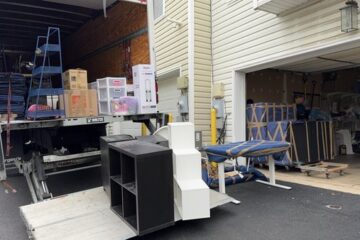How Requirements Management Solutions Boost Team Productivity

Are you tired of wasting time on disorganized and inefficient collaboration? Do you dream of a streamlined workflow that boosts your team’s productivity to new heights? Look no further! In this blog post, we will explore the power of requirements management solutions in unlocking efficiency and collaboration. From seamless communication to effective task allocation, these tools are revolutionizing the way teams work together. Get ready to supercharge your team’s productivity as we delve into the exciting world of requirements management solutions!
Introduction to Requirements Management Solutions
Requirements management is a crucial process in any project or product development, as it ensures that the team is working towards achieving the desired outcome. It involves identifying, documenting, and tracking all the requirements for a project and making sure they are properly implemented and tested. However, managing requirements manually can be a daunting task, especially when dealing with complex projects that involve multiple stakeholders.
This is where requirements management solutions come in. These are software tools specifically designed to help teams streamline their requirements management processes and achieve better collaboration and productivity. In this section, we will delve into what requirements management solutions are, how they work, and why they are essential for efficient project delivery.
What Are Requirements Management Solutions?
Requirements management solutions are software tools that assist teams in capturing, tracking, managing, and communicating project requirements throughout the development lifecycle. They provide a centralized platform for all stakeholders involved in the project to collaborate on defining and prioritizing requirements. This includes business analysts, developers, testers, project managers, customers or clients.
These tools typically offer features such as requirement traceability matrices (RTMs), version control capabilities, real-time collaboration options, reporting functionalities and integrations with other project management tools like JIRA or Trello.
How Do They Work?
Requirements management solutions work by automating various aspects of the requirements gathering and tracking process. The first step is usually creating a repository where all the different types of requirements can be captured – functional or non-functional specifications from users or stakeholders.
Understanding the Importance of Efficient Team Collaboration
Effective teamwork is crucial for any organization to achieve success and stay ahead in today’s fast-paced business environment. In order to achieve this, team collaboration plays a vital role in driving productivity and achieving goals efficiently. With the rise of remote work and virtual teams, it has become even more important for teams to collaborate effectively.
Team collaboration refers to the process of individuals working together towards a common goal, using their skills, knowledge, and resources to achieve desired outcomes. It involves effective communication, coordination, and cooperation among team members. When done efficiently, team collaboration can lead to improved decision-making, increased productivity, higher quality work output, and overall efficiency.
The Importance of Efficient Team Collaboration
- Improved Communication:
One of the key benefits of efficient team collaboration is improved communication. When team members work together effectively, they are able to share ideas, provide feedback and discuss solutions openly. This leads to better understanding among team members and prevents misunderstandings or conflicts that may arise due to lack of communication.
- Faster Problem-Solving:
In a collaborative environment where ideas are freely shared and discussed among team members, problems can be identified faster and resolved more efficiently. Different perspectives are brought in which allows for creative problem-solving approaches leading to quicker resolution.
- Enhanced Productivity:
When individuals with diverse skill sets come together as a team with a common goal in mind, they complement each other’s strengths resulting in increased productivity.
How Requirements Management Solutions Improve Team Productivity
Requirements management solutions are software tools designed to streamline the process of managing and tracking project requirements. They offer a centralized platform for teams to define, prioritize, and track requirements throughout the entire project lifecycle. While this may seem like a simple task, it can often become overwhelming and lead to confusion and delays if not managed properly.
In this section, we will explore how requirements management solutions improve team productivity by increasing efficiency, promoting collaboration, and ensuring accuracy in project requirements.
- Increased Efficiency
One of the primary ways that requirements management solutions improve team productivity is by increasing efficiency. These tools provide a structured approach to requirement gathering and management, eliminating manual processes that are prone to errors and time-consuming.
- Promotes Collaboration
Another significant advantage of using requirements management solutions is their ability to promote collaboration among team members. In traditional approaches where requirements are documented in spreadsheets or documents, communication
Features and Benefits of Requirements Management Solutions
Requirements management solutions are essential tools for any team, project or organization that wants to streamline their processes and improve productivity. These solutions offer a comprehensive approach to managing requirements throughout the entire lifecycle of a project. In this section, we will delve into the features and benefits of requirements management solutions, highlighting how they can boost team productivity.
- Centralized Requirement Management:
One of the key features of requirements management solutions is their ability to centralize all requirements in one place. This means that teams no longer have to rely on scattered spreadsheets or documents to keep track of their project’s requirements. With a centralized system, all team members have access to the same information in real-time, facilitating better collaboration and communication.
- Traceability:
Traceability is another crucial feature of requirement management solutions that makes it easier for teams to track changes and understand how each requirement contributes to the overall project goals. By having clear traceability between requirements, stakeholders can easily see how each change affects other parts of the project and make informed decisions.
- Version Control:
Version control allows teams to manage multiple versions of a requirement without losing track or making mistakes due to human error. With this feature, teams can revert back to previous versions if needed or compare different versions side by side, ensuring accuracy and avoiding confusion.
- Collaboration Tools:
Most requirement management solutions come with built-in collaboration tools such as commenting systems, notifications, and task assignment features.
Real-Life Examples of Companies Boosting Efficiency with RM Solutions
In today’s fast-paced business world, staying efficient and productive is crucial for companies to remain competitive. Many organizations are turning to requirements management (RM) solutions as a means of boosting efficiency and collaboration among their teams.
Here are some real-life examples of companies that have successfully implemented RM solutions and seen significant improvements in their productivity:
- Amazon: The e-commerce giant has been using RM solutions to manage its vast inventory and streamline its supply chain processes. By utilizing sophisticated analytics, Amazon is able to accurately predict customer demand, optimize product delivery, and reduce operational costs. This has resulted in increased efficiency, faster order fulfillment skincare advise, and improved customer satisfaction.
- Toyota: The automotive company has integrated RM solutions into its design and production processes to improve the quality of its vehicles while reducing development time. With the help of these tools, Toyota can effectively capture customer requirements, track changes throughout the design process, and ensure that all stakeholders are aligned on project goals. As a result, they have been able to bring new car models to market faster while maintaining high levels of quality.
- NASA: The space agency relies heavily on RM solutions for managing complex projects such as space missions. By using these tools to define project scope, track requirements across different teams and suppliers, and document changes along the way, NASA is able to achieve higher levels of efficiency in their operations. This has enabled them to successfully launch numerous missions within tight deadlines while minimizing errors.
Common Mistakes to Avoid When Implementing RM Solutions
When implementing requirements management (RM) solutions, there are several common mistakes that organizations make which can hinder the effectiveness and success of the implementation. In this section, we will explore these mistakes in detail and provide tips on how to avoid them.
- Failing to define clear objectives: One of the most common mistakes when implementing RM solutions is not having a clear understanding of what you want to achieve with the software. Without clearly defined objectives, it becomes challenging to select the right RM solution for your organization, leading to wasted time and resources. To avoid this mistake, take the time to identify your specific needs and priorities before choosing an RM solution.
- Not involving all stakeholders: Requirements management involves multiple teams and stakeholders across different departments. Often, organizations make the mistake of only involving a small group of people in the selection and implementation process. This can lead to incorrect assumptions about user needs and requirements, resulting in an inadequate solution that fails to meet everyone’s needs. It is crucial to involve all relevant stakeholders from different levels of the organization throughout the entire implementation process.
- Overlooking training and support: Implementing new software requires proper training for users to understand its features fully and use it effectively. Many organizations make the mistake of investing in expensive RM solutions but fail to allocate enough resources for training employees on how to use them properly.
Tips for Choosing the Right RM Solution for Your Team
Choosing the right requirements management (RM) solution for your team is crucial to unlocking efficiency and collaboration. With a plethora of options available in the market, it can be overwhelming and challenging to make the best decision for your team’s needs. In this section, we will provide you with some helpful tips to consider when choosing an RM solution for your team.
- Identify Your Team’s Needs
The first step in choosing the right RM solution is to identify your team’s specific needs and requirements. It is essential to involve all stakeholders, including project managers, developers, testers, and business analysts, in this process. This will help you understand their pain points and what features they require from an RM solution.
Some key questions to ask during this stage are:
– What type of projects does your team work on? Is it software development, product design, or a combination?
– How many people are involved in the project? Do they work remotely or in-office?
– What level of collaboration do you need within the team?
– Are there any specific compliance or regulatory standards that need to be met?
Having a clear understanding of your team’s needs will guide you in selecting an RM solution that caters to those requirements.
- Consider User-Friendliness
An ideal RM solution should be easy-to-use and intuitive for all members of your team regardless of their technical expertise. Complicated tools may cause frustration and hinder productivity rather than boosting it.
Conclusion: Unlocking Efficiency and Collaboration with RM Solutions
In today’s fast-paced business environment, efficiency and collaboration are crucial for achieving success. Companies must streamline their processes, reduce waste, and foster effective teamwork to stay competitive. However, these goals can be challenging to achieve without the right tools and strategies in place.
This is where requirements management (RM) solutions come in. These software tools are designed to help organizations manage their product development lifecycle, from ideation to delivery. They provide a centralized platform for capturing, organizing, tracking, and analyzing project requirements – making them an essential tool for boosting team productivity.
By implementing an RM solution in your organization, you can unlock several key benefits that will significantly improve efficiency and collaboration within your teams:
Leave a reply
You must be logged in to post a comment.










